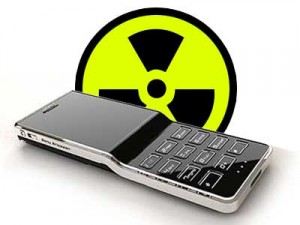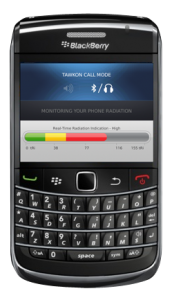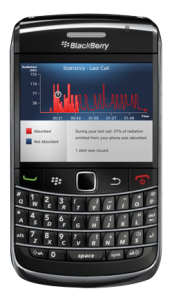Among the many topics that surround the tech industry and specifically the mobile space, cellphone radiation is one of the hottest (no pun intended, OK, maybe it was a little intended). We recently read about a new study that was just launched and will be researching the correlation between mobile phone usage and health issues. The study is called COSMOS and is planned to be conducted over the period of three decades.
We also just read about the results of a ten year study by Interphone that concluded that extended mobile phone usage might very well be linked to an increased risk of developing brain tumors. This is a worrisome topic to say the least.
The worst part of this issue is that we all continue to use our mobile phones, and tend to ignore this issue with the justification that we cannot live without our cellphones. Now, the thing is in today’s day and age, that might very well be true and I for one cannot imagine my day without the connectivity my smartphone provides. However, there has to be a better way to deal with radiation than to ignore it completely.
Yesterday, TechCrunch and Scoble reported that a new BlackBerry app was released called tawkon (download it here). I have had the chance to test out this app and let me tell you that this app is to cellphone radiation like a speedometer is to a car. Let me explain. We all know about the risks of driving and car accidents. Yet, we all do it. Why? Because we try to drive responsibly using things like a speedometer to maintain a reasonable speed when driving as well as seat belts and airbags just in case. Tawkon allows you to use your mobile phone responsibly by notifying you when your phone is emitting an elevated level of radiation and tells you exactly how to reduce your exposure to it.
Now, I am not going to go into all the technical details of how radiation works, mostly because I do not fully understand it, but to simplify things, the harder the phone has to work, the more radiation it emits. So, for example, if you are in a place in your home that is surrounded by concrete walls, the phone, in order to get decent mobile reception, has to work a whole lot harder to communicate with the cell tower, thereby increasing its level of radiation.
In such a case, tawkon will let you know by either beeping or vibrating (depending on how you configure the app) that you should take one of a few possible actions in order to lower your exposure. The options available to you are to use an earpiece, wired or wireless, to distance the phone from your body by activating the phone’s speaker, or to simply change the orientation of the handset itself (vertical as opposed to horizontal). You can also obviously change locations and go talk somewhere else that has lower radiation levels.
Tawkon also has a lot more advanced features such as “Prediction Mode”, which in essence allows you to map out your home or office based on the levels of radiation in each location. You might find that in your study, there is more radiation than in your bedroom, and you will know that if that is the case, when talking in the study, it is best to you use the options mentioned above.
Some people I have encountered are skeptical as to how this technology works and whether it is accurate. I understand these concerns, but after using the app and reading about how it works, you can be sure this is the closest and best solution to the radiation issue I have ever encountered.
To make a long story short, tawkon was submitted to Apple for the App Store and rejected. As of yesterday, it can be downloaded for BlackBerry, and the developers of tawkon (whom you can follow here for developments on this story) already sat with Apple, who are now reconsidering the app for the iPhone. To encourage Apple to approve the app, the guys who developed tawkon have started a petition on their site and on Twitter to basically show Apple that there is an interest for such a solution. I don’t know about you, but the way I see it, if we can avoid radiation without changing the way we use our phones, then why not? You can sign the petition here.
In conclusion, all the studies being conducted are steps in the right direction, but I do not want to wait around for thirty years to hear the results. I think tawkon is a perfect solution to the problem of mobile phone radiation, and not only is it a very practical app, it also has an amazing technology behind it, and it is all wrapped up in a beautifully designed interface on both the BlackBerry and iPhone.
I hope I did a decent job explaining what this app does, but the below videos should clear up some things for you just in case.
Would love to hear your thoughts about this app in the comments.




I met with Gil Friedlander, CEO of Tawkon, at RIM’s WES in Orlando at the end of April and agree that this is both a brilliant piece of technology and an app that should be a “must have” for both individuals and enterprises.
Individuals can use the app to monitor and, more importantly, reduce their exposure to consistent, if low and “acceptable”, levels of cell-generated emissions. While not an alarmist and a user of cellular technology since 1986, it makes sense to know and mitigate the exposure levels.
Enterprises should deploy Tawkon for both the right and the practical reasons. The ‘right’ reason is to ensure the well-being of their most important asset-their people. Cell phones have made employees more productive and more accessible (for better or worse!). Enterprises should be monitoring and informing their mobile users about their exposure and ways to limit it.
Without appearing to be too cynical, the ‘practical’ reason for enterprises to deploy Tawkon is to mitigate their liability over time. By proactively monitoring and advising their employees about reducing their exposure, enterprises will go a long way in providing a defensible position against litigation from employees who might appear to be impacted by cellular emissions on the job. (Think asbestos!)
I think that Apple should definately have this app available for users, it is just a way to be safe and do what we can to protect us without suddenly throw our mobiles to be recycled and turned into ash trays.
Studies have been made in Canada and results point to a evident link between cancer and mobile phones. But what about wifi, bluetooth, etc?
Maybe we need more applications like this, special cases that contain the radiation better, etc.